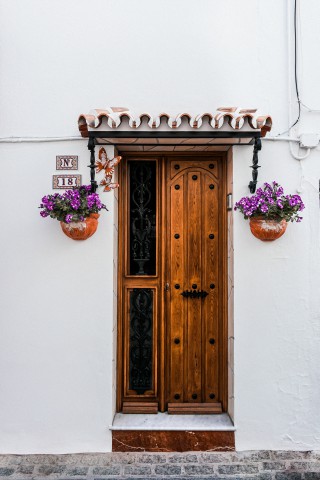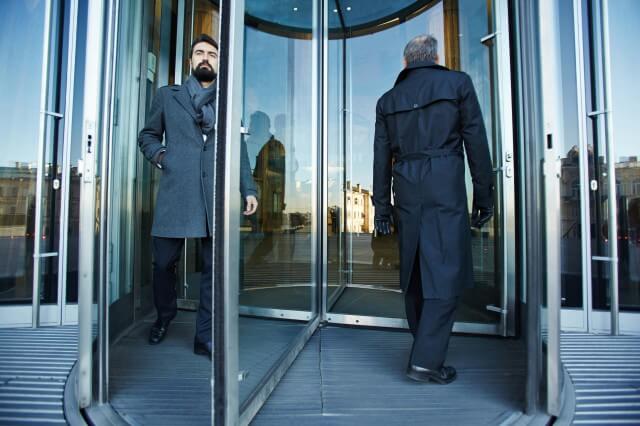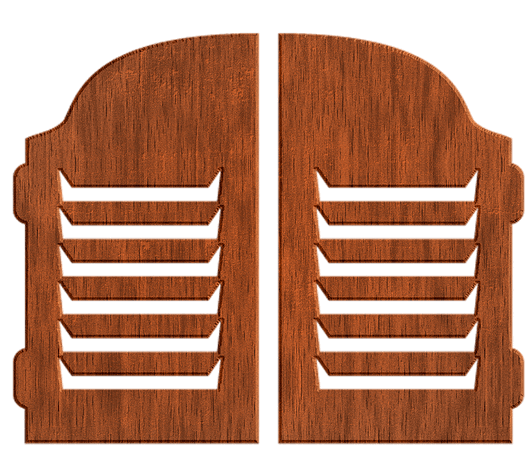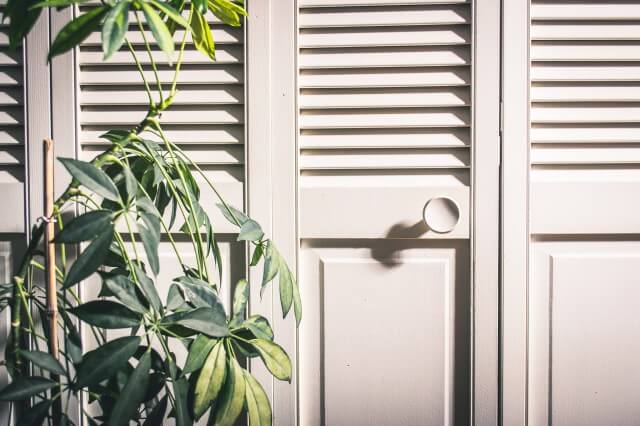Types Of Doors at Specific Locations And Their Uses
Following are the 11 types of doors and their uses.

1) Battened and Ledged Doors
Battened and Ledged Door is the simplest type of door. These types of doors are mostly used where the strength of the door, as well as the appearance of the door, is not a vital factor. Economically it is very cheap as it requires fewer numbers of workers, and also there is no need to hire skilled workers. As the name suggests, it consists of wooden battens and ledges. Battens are the verticle boards or members, which are secured by horizontal members know as ledges.
Generally, there are three ledges, namely, lock ledges, middle ledges, and top ledges. Sometimes middle and bottom ledges are wider than top ledges. Battens are usually 10 cm to 15 cm wide and 20 mm to 30 mm thick. Ledges are usually 10cm to 20 cm wide and about 30 mm thick. Usually, the top ledge is kept 10 cm to 12 cm wide whereas the other two are made about 18 cm to 20 cm wide.
The length of the battens is cut as per the requirements of the door height. Door shutter is developed by joining series of battens by means of tongued and grooved joints and held together with the help of ledges. The shutter is hung either by iron T-hinges or cross garnets on the ledges.
2) Battened, Ledged and Braced Doors
This door is similar to the battened and ledged door except that additional diagonal members, called braces, are provided to increase its strength. Generally, the thickness of the braces are 20 to 30 mm. The wide of the braces are Usually 100 to 150 mm.
This type of door can be used for wider opening as compared to battened and ledged doors. These types of doors are widely used in bathrooms, water closets, and some situations where appearance is of secondary importance.
3) Battened, Ledged, Framed and Braced Doors
These doors can be adopted for external use.
Are you looking for a hanger door specialist? here it is – bespoke hangar doors specialists
4) Framed and Paneled Doors
These are the most common types of doors and are widely used in private buildings.
5) Glazed or Sash Doors
These doors are extensively used in posh residential buildings as well as in public buildings.
6) Sliding Doors
The use of hinges to secure the shutters to the frame is completely eliminated by sliding doors. They are frequently used for godown, store, and garage entrances. They are moved using runners that are fixed horizontally at the top and bottom of the door. The lower end of the door slides between guides, preventing the door from moving too far to the side.
The door may slide sideways on one side or both sides, and it may have one or more leaves (or pieces). The runners are attached past the opening for a distance equal to the width of the panel so that when the door is opened, the door shutter stays on the runners at its new position parallel to the face of the wall and clear of the opening. When this door is open, neither does it block traffic nor does it take up any space in the room.
7) Collapsible Doors
These doors are mostly used for schools, sheds, godowns, compound gates etc.
8) Revolving Doors
The Revolving doors consist mainly of a centrally located mullion or pivot in a circular opening. The revolving shutters or leaves which are four or three in number are radially attached to the pivot.

The radiating shutters can be completely glazed, fully panelled or partially panelled. The shutters are enclosed in a vestibule. The rubbing ends or edges of the shutters are provided with rubber weathering strippings, which prevent a draught of air.
Simultaneously, these doors provide access to the entrance on one side and the exit on the other, and automatically, keeping the door closed when not in use.
The revolving doors are used in big hotels, banks, office buildings, and other such places where a continuous flow of pedestrian traffic is persistent.
9) Swing Doors
A swing door is such a type of door that can swing in both directions i.e it can be opened either inward or outward direction. This type of door is mainly provided in public buildings like offices, banks, police stations, big hotels, and public toilets. They are also used in residential buildings in the case of kitchen and dining rooms. It may be consists of single leave or double leave. You can easily understand what I am saying by seeing this picture.

When the door has to be opened, it has to be push lightly, When it is left from push it will automatically return in the closed position, due to the force of the spring hinges.
These types of doors may be made of wood, steel, or wood with a glass panel. It may create a risky situation If two persons try to open it from opposite directions at the same time.
10) Rolling Steel Doors
These types of doors are generally provided for garages, show roods, shops, godowns e.t.c.
11) Louvered doors
These doors may be provided in sanitary blocks of public buildings, residential buildings.
Louvered doors are also known as Venetian doors. In this type of doors, the shutters are provided with louvers, either fully or partly.

Thin parallel lovers of timber, steel or glass are placed horizontally one above the other at such an inclination that the horizontal vision is obstructed. The louvers may be movable or fixed.
In the case of the louvered doors with fixed louvers, the upper back edge of any louver is kept higher than the lower front edge of the louver just above it. The louvers should always be kept sloping away from the inner side of the door so that rainwater may not enter through them.
In the case of the louvered doors with movable louvers, a verticle piece of timber is provided to which the louvers are attached through hinges. The louvers can be moved up or down with the help of the vertical piece of timber.
The louvered door allows free passage of air when closed and at the same time maintains privacy. They are used for sanitary blocks of public buildings, residential buildings, etc. The louvered doors should be periodically cleaned.
Read Also:
Door & Window, Size, Types, and Technical term used in connection